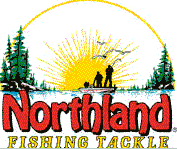 |
|
|
|
Right Conditions for Walleyes
Wherever walleyes are found, anglers can get in on this exciting action provided they can identify the prerequisite key to success. And interestingly this key to success is not to be found in your tackle box, at the local bait shop or in your boat. Instead, you will find it in your newspaper, on the radio and on television. In a pinch you can even get it by simply looking out your window. If you have not guessed already, the key to which I am referring is an accurate weather forecast. Specific weather conditions tend to trigger a walleye feeding frenzy. Basically it's a cold front, but there's more to it than that. The ideal conditions for catching big walleyes may come only a half-dozen times in a season. To make the most of them a fisherman must watch forecasts and the clouds and be prepared to fish one step ahead of the storm. Before I get into specific weather conditions needed to provoke a feeding frenzy, let's first set the stage. The ideal period to fish this pattern is in the summer, when walleyes are firmly entrenched in their deeper locations. At this time of the year, isolated sunken islands and reefs, points, bars and the deep water edges of weedbeds will generally be called home by old marble eyes. Walleyes might also be active in the spring when fish are vacating the more shallow shoreline reaches, and in the fall when surface temps start to chill. 65 degrees F is the critical temp that most walleye anglers look for when searching for active walleyes. Now, as to the critical weather factors that stimulate the type of action most anglers only dream about, I first look for a consecutive string of warm sunny days. The longer the string the better. The second ingredient is a strong wind. Not a gentle breeze mind you, but a very strong wind. Third is an approaching storm. It does not have to be life-threatening or immediately impending, but it should be "brewing". You know the feeling, a gorgeous hot, sunny day when you think its going to rain tonight. As many fisherman are aware, "cold fronts" are the bane of summertime angling success. These dramatic systems are usually the ones most likely to end a spell of "nice" weather. That is certainly an oversimplification, but, for our purposes, it will suffice. This contrary change in the weather may be very dramatic, as when a massive storm passes through and it rains for several days in a row. Or the shift may be quite subtle, as when the weather changes from hot, hazy conditions to slightly cooler temperatures with little or no humidity and mile high blue skies. When severe weather systems roll in, walleyes typically become less
aggressive. In 1994 during the PWT Championship a severe "cold front"
rolled in and I had to change my tactics. What I did was to tie on
a During the PWT pro-am on Saginaw Bay, Michigan, I was onto a hot bite of big suspended walleyes. I concentrated on the six-foot level with a spinner and crawler behind in-line trolling boards. When a low pressure system arrived overnight, I adjusted my presentation by eliminating the boards and downsizing my spinner blades for a more precise presentation to walleyes now positioned near the bottom. I also did away with the two rod approach and talked my partner into holding one rod a piece so we could detect subtle bites while we quartered the waves to slow down our approach. Although I didn't get first place in that tournament it was enough to put me in second place even when the weather turned bad. Weather conditions often determine walleye location, dictate presentation,
and ultimately measure success, yet weather is probably one of the least
understood element of the fishing equation. You have to adjust to
the right conditions for Walleyes.
Please visit these site sponsors |
|---|---|
